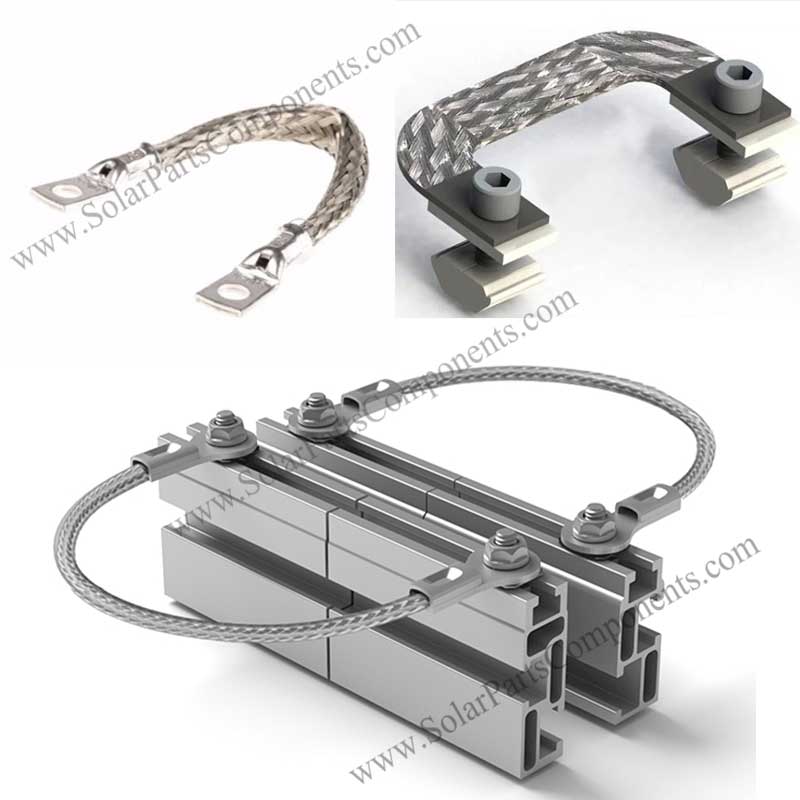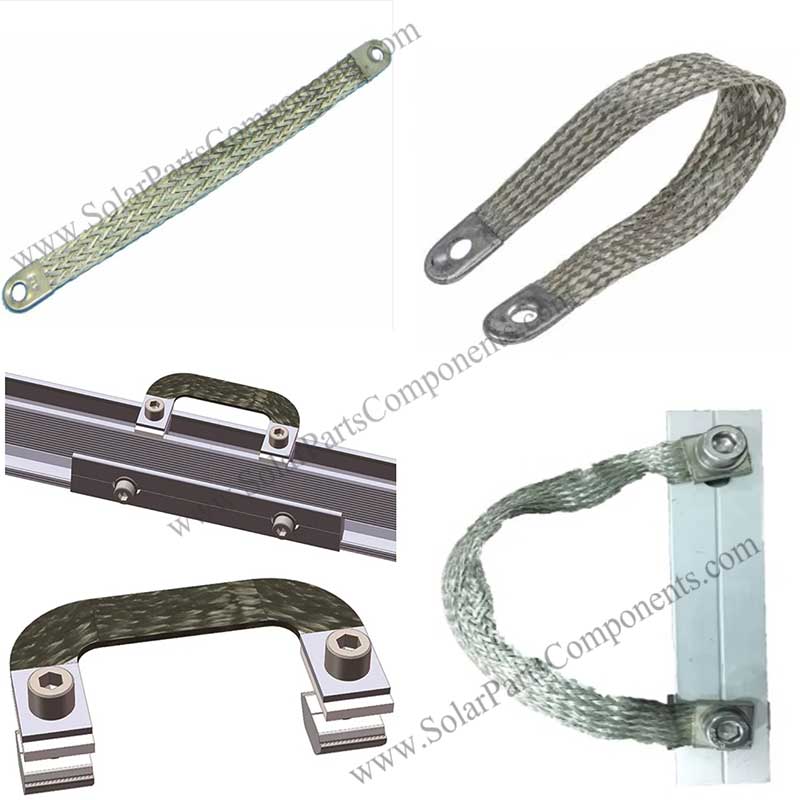Solar grounding jumper is an important component used in solar power generation system, mainly used to introduce excess charge into the earth to ensure the safety and reliability of the system.
The following will introduce the solar bonding jumper in detail from the aspects of material selection, working principle, scale type and selection method.
- Material selection
The material of solar grounding jumper is usually made of metal materials with good conductivity, such as copper, aluminum, stainless steel, etc. Different materials have their own advantages and disadvantages:
Copper: It has high conductivity and corrosion resistance and is widely used in various solar energy systems. Although the price is higher, its good conductivity and durability are more advantageous in long-term use.
Aluminum: It is relatively cheap and light, suitable for light structures, but its conductivity is slightly lower than copper, and it is not corrosion-resistant, especially in high humidity or high salt environment, it is easy to oxidize.
Stainless steel: It has excellent corrosion resistance, especially suitable for coastal and high humidity areas. Although the conductivity is lower than copper and aluminum, its durability in harsh environments is outstanding.
When selecting materials, it is necessary to comprehensively consider the environmental conditions, budget and service life of the project location.
- Working principle
The main function of the solar grounding jumper is to effectively guide the excess charge generated in the solar power generation system to the ground to prevent the occurrence of safety hazards such as electric shock and arc.
The principle is to use the conductive properties of the ground to connect the zero potential of the system to the earth so that unexpected current will not accumulate in the system, thereby ensuring the stability and safety of the circuit.
The grounding strip also plays a key role in lightning protection. When a lightning strike occurs, the grounding strip will guide the lightning current to the ground to prevent damage to the solar equipment.
In addition, through grounding, the system can avoid safety problems such as electric shock and fire caused by static electricity accumulation.
The solar grounding jumper is an important component to ensure the safe operation of the solar system. The reasonable selection of the material and specifications of the solar bonding jumper has a vital impact on the safety and reliability of the system.









